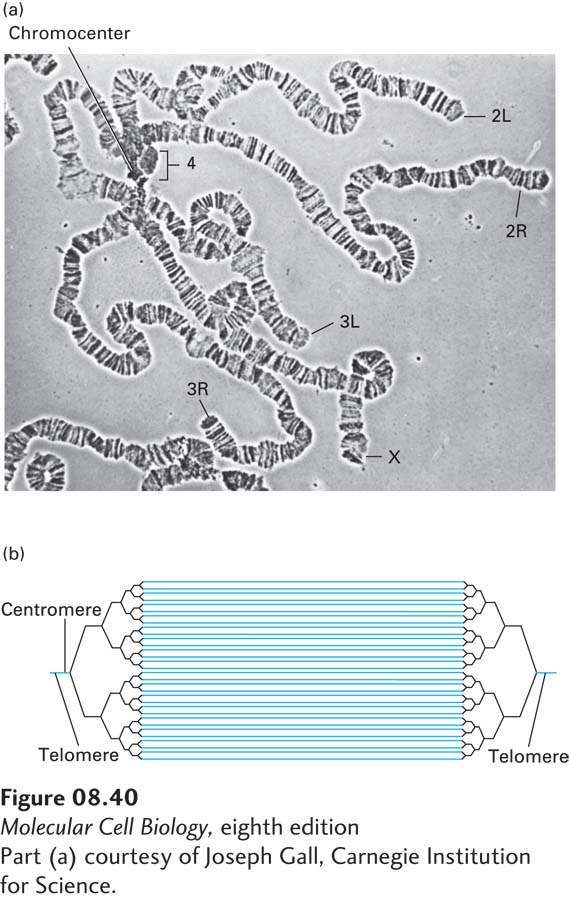
EXPERIMENTAL FIGURE 8- 40 Banding on Drosophila polytene salivary gland chromosomes. (a) In this light micrograph of Drosophila melanogaster larval salivary gland chromosomes, four chromosomes can be observed (X, 2, 3, and 4), with a total of approximately 5000 distinguishable bands. The banding pattern results from reproducible patterns of DNA and protein packing within each site along the chromosome. Dark bands are regions of more highly compacted chromatin. The centromeres of all four chromosomes often appear fused at the chromocenter. The tips of chromosomes 2 and 3 are labeled (L = left arm; R = right arm), as is the tip of the X chromosome. (b) The pattern of amplification of chromosome 4 during five replications. Double- stranded DNA is represented by a single line. Telomere and centromere DNA are not amplified. In salivary gland polytene chromosomes, each parental chromosome undergoes about 10 replications (210 = 1024 strands). See C. D. Laird et al., 1973, Cold Spring Harbor Symp. Quant. Biol. 38:311.
[Part (a) courtesy of Joseph Gall, Carnegie Institution for Science.]
[Leave] [Close]